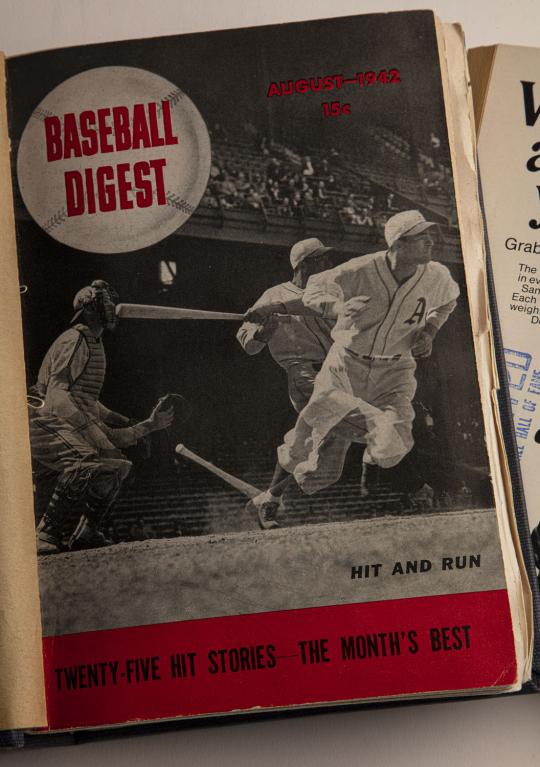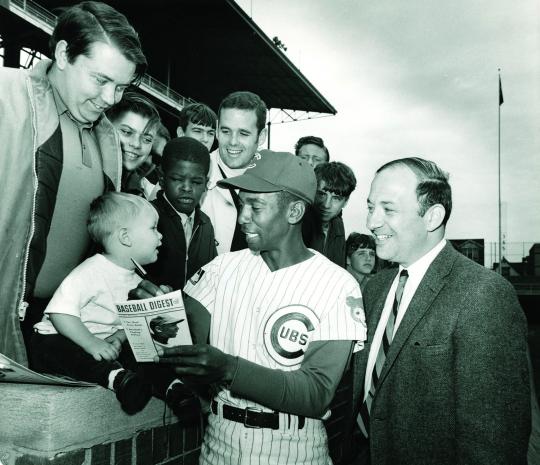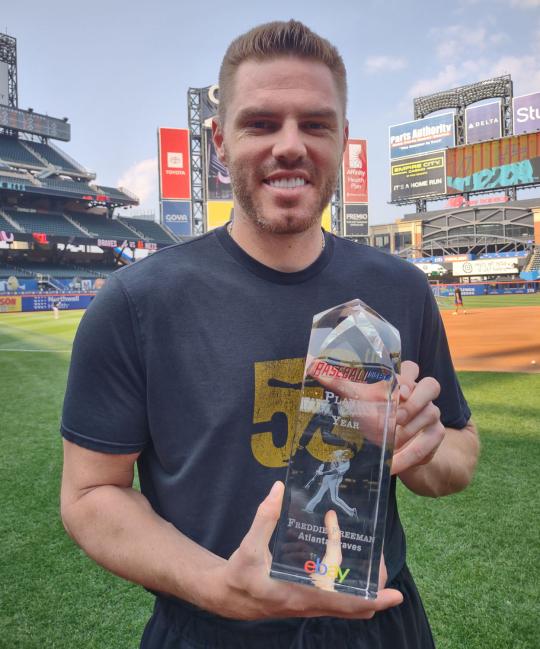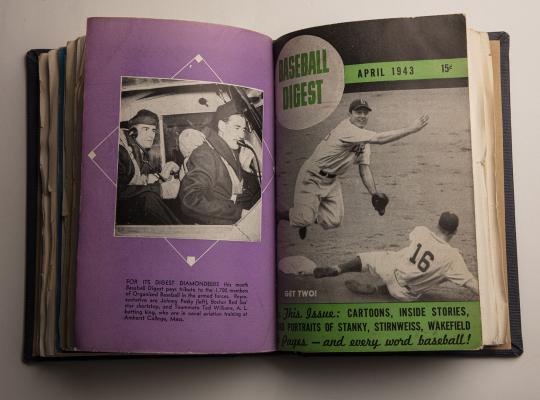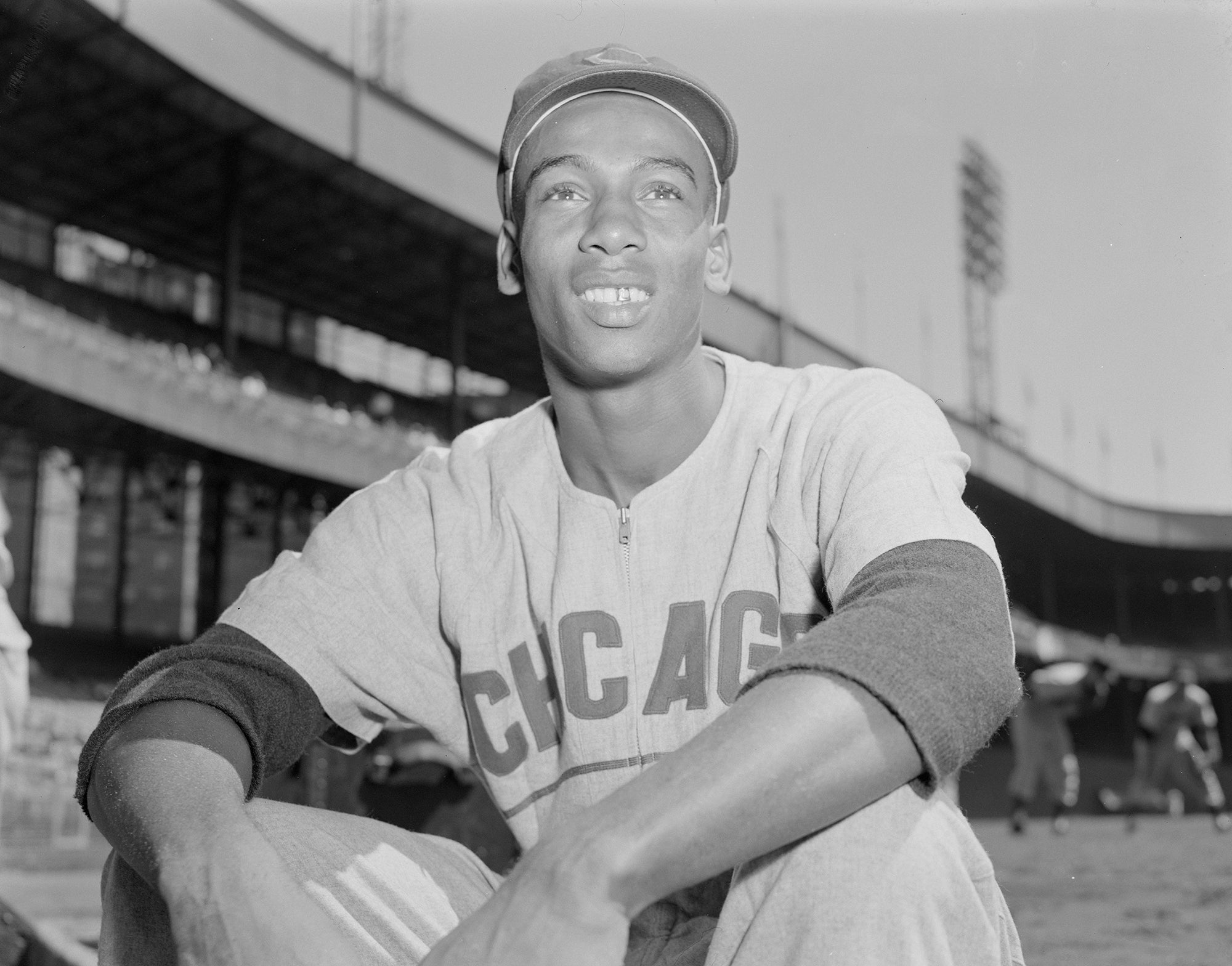- Home
- Our Stories
- Baseball Digest still enthralling fans in eighth decade
Baseball Digest still enthralling fans in eighth decade
As a youngster, one way acclaimed sports broadcaster Bob Costas became knowledgeable about the National Pastime was by flipping through the black-and-white pages of Baseball Digest.
“I began reading Baseball Digest as a kid,” Costas said. “I craved baseball content of all kinds, both current and historical. Baseball Digest provided that, along with quizzes about baseball rules and history.
“The landscape was much different then. Fans had the Sporting News, (“Baseball’s Bible”), Sports Illustrated, Sport magazine, local papers, and a few annual publications like ‘Baseball Stars of (whatever year)’ that served as reviews and/or previews of the past and upcoming season. That was about it. Thus, Baseball Digest’s content felt original to me, and expanded my knowledge and appreciation of the game beyond the teams and players I was most familiar with.”
Much has changed over the decades, but Baseball Digest – the nation’s longest-running baseball magazine, which is celebrating its 80th anniversary in 2022 – has remained a constant through conflicts abroad, vast economic swings, a media revolution and even a worldwide pandemic.
Official Hall of Fame Merchandise
Hall of Fame Members receive 10% off and FREE standard shipping on all Hall of Fame online store purchases.
Hall of Fame Membership
There is no simpler, and more essential, way to demonstrate your support than to sign on as a Museum Member.
Chances are, fans of the game, both young and old, have fond memories of reading Baseball Digest at some point in their lives. And while the publication has evolved over the decades in both size and content, it has remained a friendly reminder of why the sport has remained entrenched in the psyche of America.
In a pre-Internet world, Baseball Digest was especially appealing to the fans whose first exposure to out-of-town baseball writing came through the pages of the publication. In its early days – when it was producing between nine to 12 issues per year – original content was featured but it mostly consisted of previously-published articles.
Herbert F. Simons, a former sportswriter with the Chicago Daily Times and Chicago Journal, was the editor and publisher of Baseball Digest until his death in 1968. After earning his journalism degree from Northwestern University in 1928, he covered the Chicago White Sox and Cubs before deciding it was time to stay home and start a family.
“So he began kicking around some ideas,” Simons’ widow, Mrs. John Grant, told the Chicago Tribune’s Jerome Holtzman in 1992. “Readers Digest had been a success, and Herb reasoned, ‘Why not a similar magazine devoted to baseball?’”
Another contributing factor in Simons’ decision to start Baseball Digest was the celebrated “Green Light Letter” President Franklin Delano Roosevelt sent to Baseball Commissioner Kenesaw Mountain Landis in January 1942. The missive encouraged the continuation of baseball despite America’s entry into WWII as a way to improve morale.
The first issue of Baseball Digest, a monthly magazine with a price of 15 cents, an annual subscription costing $1.50, and sized at its familiar 8 inches by 5½ inches, was first published in August 1942.
“For light, but interesting reading,” wrote the Minneapolis Star-Tribune in July 1942, “we recommend Baseball Digest, a pocket-sized magazine that abounds with unique plays and amusing anecdotes of the diamond.”
Featuring an image of a batting Elmer Valo of the Philadelphia Athletics on the cover, inside were stories condensed from when they originally appeared in newspapers and magazines from around the country. Among the 24 pieces were those penned by sportswriters John Kieren, H.G. Salsinger, Tom Meany, Gordon Cobbledick and Shirley Povich, as well as a Moe Berg story excerpted from The Atlantic and a Billy Evans feature from Esquire.
“The first years were a terrible struggle,” said Mrs. Grant, who handled the secretarial and subscription duties for Baseball Digest. “The war had started, and the government said there was a limited amount of paper you could use. It was based on how much paper you used the year before. So we didn't have that much paper.
“Some months it sold and some months it didn't, or so the distributors told us. The distributors, generally, were not very honest. But some months we got an honest count. That's the way it went.”
After Simons passed away, Norman Jacobs became publisher in 1969. With a background in advertising, he – along with newly installed editor John Kuenster, a longtime Chicago sportswriter – helped circulation grow from around 60,000 to a few hundred thousand in relatively short order.
After a chance meeting with Kuenster, Dan McGrath, early in his long career as a sportswriter and editor, submitted a story to Baseball Digest on young San Francisco Giants slugger Jack Clark that was used in the magazine.
“He also sent me a check – 60 bucks, if I recall – but that was nothing compared to the psychological value of having my work appear in a publication that meant something to me,” wrote McGrath in a 1993 Sacramento Bee sports column, “one that has stood its ground against flashier competition by focusing on the game and its history in a youngster-friendly innocent manner that captured the imagination of this once-young reader.
“It told me stories about the game when I was young and impressionable, stories with exotic datelines like Pittsburgh and San Francisco, stories about mythological heroes like Warren Spahn and Roberto Clemente, stories under intriguing bylines like Shirley Povich and Harry Jupiter.”
Baseball Digest’s success during the era ultimately led to Football Digest in 1971, Hockey Digest in 1972, Basketball Digest and Auto Racing Digest in 1973, Soccer Digest in 1978, and Bowling Digest in 1983.
“I started reading Baseball Digest in the early ‘60s, first as a newsstand buyer, later as a subscriber,” wrote Marty Appel, longtime baseball writer, executive and TV producer, in a recent email. “No doubt a (Mickey) Mantle story on the cover drew me to it. And I read it cover to cover. It got me familiar with baseball writers from the whole country, the stories were well written, and the ‘letters’ pages were always so interesting, augmented by charts displaying really interesting material not found elsewhere.”
Over the years, Baseball Digest has featured stories by the game’s greatest writers from around the country, including everyone from Red Smith to Peter Gammons, Roger Kahn to Dan Shaughnessy, and Wendell Smith to John Holway.
For Anthony McCarron, a recent contributor to Baseball Digest who has been writing about sports for more than 30 years, his affection for the publication dates back to a childhood with a more cluttered sports magazine landscape.
“I think I first bought it on the newsstand and then talked my mom and dad into a subscription. I adored the magazine back then. I read every story in it. Sometimes more than once,” McCarron recalled. “Baseball Digest was such pure baseball. There were other options like the Sporting News or Sports Illustrated, but Baseball Digest was my favorite because it was like a pure hit in your veins of just baseball.
“Baseball Digest makes me think of days gone by where I loved baseball. And it makes me think of present day baseball as well when I'm still as in love with the game as I ever was. I probably have Baseball Digest to thank for that part of it, too, because it helped me get a baseball education when I was a kid.”
So when McCarron began writing for Baseball Digest, he called it “a total thrill. I love calling people up and telling them, ‘Hey, I'm doing this piece for Baseball Digest. Can we talk?’ It's great.”
By the early 1970s, Baseball Digest sold at newsstands for 50 cents. Each issue, which consisted of at least 100 pages, included player profiles, action photos and statistics, the Baseball Quiz, a baseball crossword puzzle, rookie reports, “The Game I’ll Never Forget,” “The Fan Speaks Out, and “Whatever Became of …?”
When Baseball Digest celebrated its 50th anniversary in 1992, U.S. President George H.W. Bush – who captained the Yale baseball team his senior year – said, “Thanks to publications like Baseball Digest, loyal fans can keep up with their favorite teams and players while also gaining an in-depth understanding of events that shape the game. Thousands of Americans eagerly await the word that such magazines bring each month.”
While Baseball Digest captures the essential timelessness of baseball and preserves for all time the special memories of the game, it also suffers when the sport does.
During the 1994-95 baseball strike, the publication’s circulation dropped about 100,000 per issue from over 300,000 only 10 years earlier.
"There's no doubt,” Jacobs said at the time, “that after the strike things really went south.”
Much like it did during its start, by providing WWII servicemen with a welcome respite during trying times, when sports were shut down in beginning in March 2020 due to the coronavirus pandemic, Baseball Digest unlocked its online archive to fans for free for four months to, as Jacobs explained, “help fill the void until we can all return to the ballpark.”
In 2021, Baseball Digest, of which a complete run can be found in the Baseball Hall of Fame Library, got a new owner – only its third in its long history – when Jacobs sold the then bi-monthly publication to minority partner David Fagley of Pro Scouts LLC.
“Today, Baseball Digest is a larger, full color publication that is fresh in its design and content in a way that makes it distinctive even in today’s very crowded media world,” wrote Costas. “It’s an effectively updated version of what made Baseball Digest appealing way back when. It offers insight into – and a celebration of – the modern game and present players, while each issue reliably includes interesting historical pieces and the old standbys of rules and trivia quizzes. A perfect new/old blend.
“It’s a very good, modern version of the Baseball Digest I grew up loving. And now, like then, I never miss an issue.”
According to Jake Zimmerman, Baseball Digest’s general manager, the publication is evolving but also relishes what its long history represents to fans.
“I think as we see more and more print publications shutter or convert to digital, people like the leisurely read of a magazine, something they can hold in their hands. A quality product not just rushed into a digital space,” Zimmerman said. “The current evolution of Baseball Digest has seen a dramatic change. We've gone from being an outside organization that really wasn't close to Major League Baseball to one that continues to grow that partnership.”
Rick Cerrone, who had once worked in public relations for Major League Baseball, the New York Yankees and the Pittsburgh Pirates, has been Baseball Digest’s editor-in-chief since 2018. He was charged with re-imagining the iconic brand’s six print issues per year.
“When I took over I did my due diligence, talking to people I knew in the game, and I found that the magazine was not resonating, even within the industry,” Cerrone said. “I ran into so many people connected with the game that would say, ‘Oh, Baseball Digest. I grew up with that as a kid. I didn't know it was still in business.’ That's a big obstacle.
“Really, the first order of business was to re-engage with the baseball community.”
A major component toward “re-engaging” was emphasizing the longstanding awards program with an actual trophy ceremony.
Besides naming their own position-by-positon All-Star team, an All-Star Rookie Team and Rookies of the Year in both leagues, Baseball Digest also awards a Player of the Year, Pitcher of the Year, and Relief Pitcher of the Year.
In 2021, Baseball Digest presented Hall of Fame centerfielder Willie Mays with its inaugural Lifetime Achievement Award, to be given annually recognizing a living individual who has made “significant contributions to the national game.”
“Today, with a circulation of around 40,000, I think we're doing very well, especially since the bulk of our business is a print publication and there's not a lot of print publications that are thriving” Cerrone said. “We are overcoming a myriad of obstacles to not only survive, but to thrive. There are challenges, but I think we continue to overcome them and provide baseball with this print publication which chronicles the game.
“For Baseball Digest to be around for 80 years is a great testament to a lot of people who have kept it not only surviving but thriving. Things change, but they've weathered all the storms. And Baseball Digest, I think, is as vibrant in 2022 as it was in 1942 or 1952 or 1962.”
Bill Francis is the senior research and writing specialist at the National Baseball Hall of Fame and Museum.
Related Stories
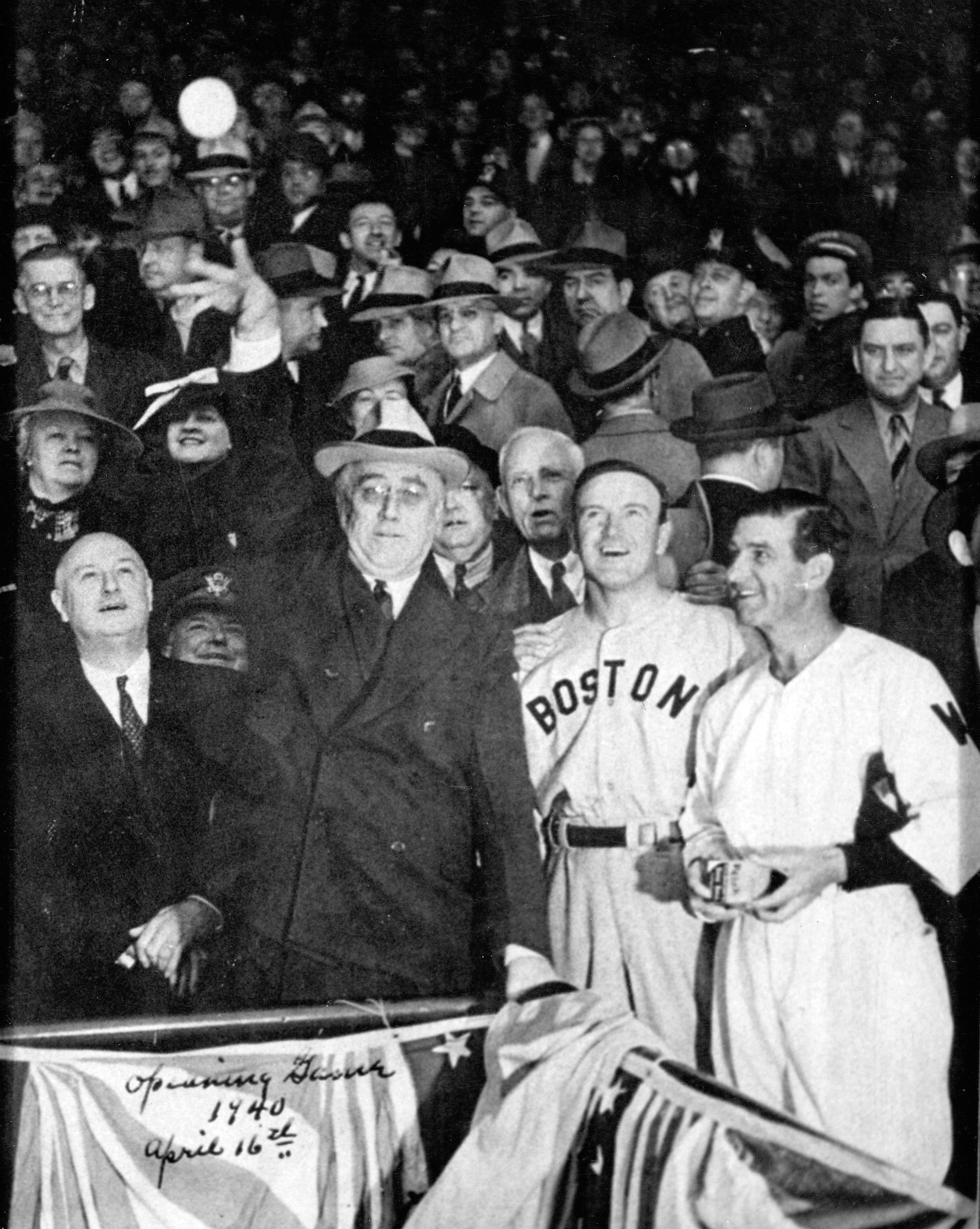
President Roosevelt gives ‘green light’ to baseball
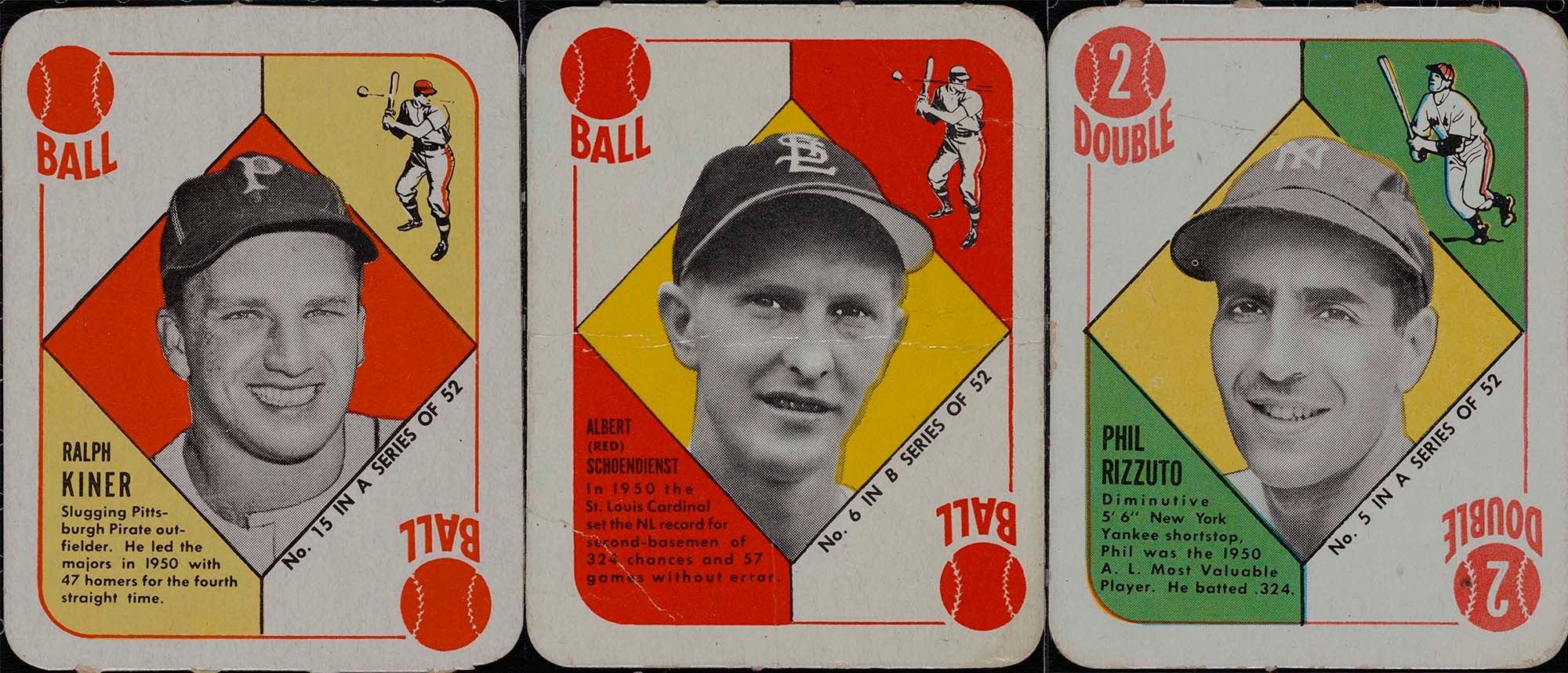
Topps entered baseball card market with first set in 1951
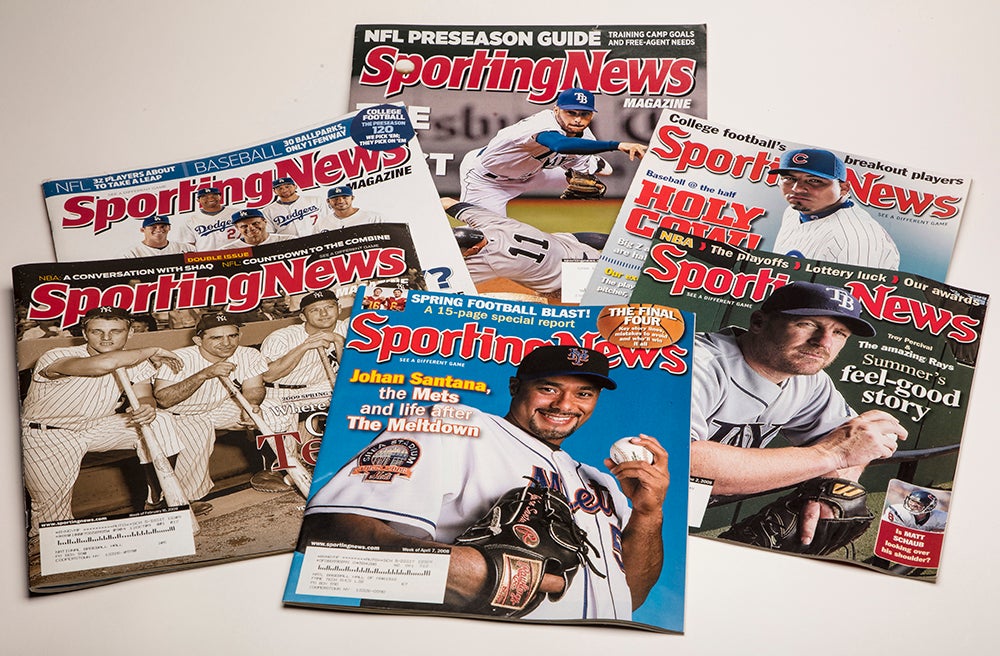
The Sporting News brought baseball to the world

Look Magazine collection chronicles iconic visuals from baseball’s past

President Roosevelt gives ‘green light’ to baseball

Topps entered baseball card market with first set in 1951

The Sporting News brought baseball to the world


